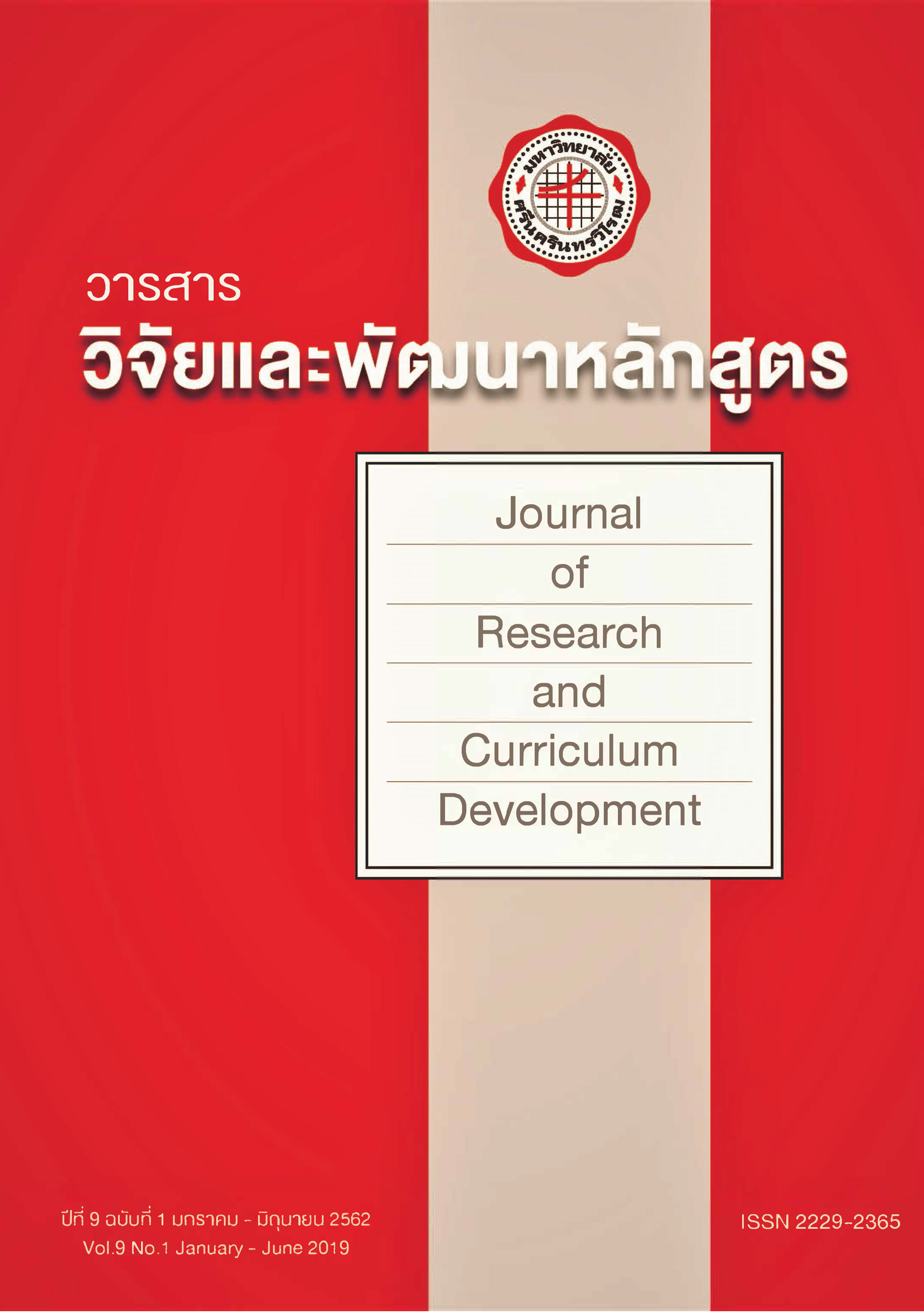การศึกษาประสิทธิภาพและความพึงพอใจของนิสิตระดับบัณฑิตศึกษาต่อการใช้สื่อการเรียนภาษาชุด English Mate
Keywords:
Graduate Students, Effectiveness, English skills, English Mate, language proficiencyAbstract
The objectives of this study were as follows: 1) the management and problems found when using English Mate as a supplementary material to improve the English language skills of postgraduate university students; 2) the development of English skills and attitudes towards students using English Mate: and 3) to develop documentary film media for English self-learning among the students. The samples in this study included thirty-three graduate students who registered for the language proficiency test in the 2017 academic year. The research instruments consisted of a questionnaire designed to measure the satisfaction of the students with English Mate and followed up with in-depth interviews. The data were analyzed by percentage. The results of the research found that: 1) the English Mate program requires a computer with a DVD players, but satisfaction with English Mate was at a high level and that this learning medium should be used as a supplementary material in learning English, 2) the most developed language skills were expressions and vocabulary, listening, reading and culture, while speaking and writing skills were developed at a medium level; and 3) a TED Talks lecture was developed as supplementary material for graduate classes.
References
สำนักงานคณะกรรมการการศึกษาขั้นพื้นฐาน. (2557). แนวปฏิบัติ ตามประกาศกระทรวงศึกษาธิการ เรื่อง นโยบายการปฏิรูปการเรียน
การสอนภาษาอังกฤษ. สืบค้นเมื่อ 24 กุมภาพันธ์ 2559 จาก https://english.obec.go.th/english/2013/index.php/th/
2012-08-08-10-26-5/62-2014-04-24-10-26-10.
Chapple, L., & Curtis, A. (2000). Content-based instruction in Hong Kong: Student responses to film. System.
28(3), 419-433.
Curtis, A. (2003). Making the most of movies in Canadian ESL classrooms. TESOL Ontario Conference Proceedings.
29(3), 29-32.
Curtis, A. (2007). Film in the ESL classroom: hearing the students’ voice. In H. McGarrell (Ed.), Language Teacher
Re-search in the Americas. (pp. 41-53). Alexandria, VA: TESOL Association.
Khan, A. (2015). Using Films in the ESL Classroom to Improve Communication Skills of Non-Native Learners.
ELT Voices, 5(4), 46-52
Gebhardt, J. G. (2004). Using movie trailers in an ESL CALL class. The Internet TESL Journal. 10(1).
Heffernan, N. (2005). Watching movie trailers in the ESL class. The Internet TEFL Journal. 9(3).
Sherman, J. (2003). Using authentic video in the language classroom. Cambridge: Cambridge University Press.
Webb, S. (2010). A corpus driven study of the potential for vocabulary learning through watching movies. International
Journal of Corpus Linguistics. 15(4), 497-519.
Wilkins, D. (1972). Linguistics in language teaching. London: Arnold.

